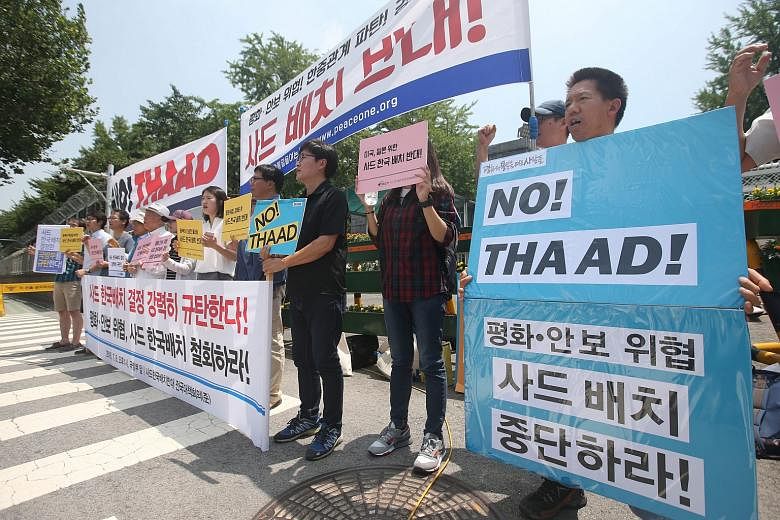SEOUL • China and Russia have sharply criticised South Korea and the United States after the latter two announced that they will deploy an advanced missile defence system in South Korea to counter a threat from North Korea.
In a joint statement yesterday, South Korea's Defence Ministry and the US Defence Department said the Terminal High Altitude Area Defence (Thaad) anti-missile system will be used only as protection against Pyongyang's growing nuclear and ballistic missile capabilities and "would not be directed towards any third-party nations".
Selection of a site for the system could come "within weeks" and the US and South Korea were working to have it operational by the end of next year, a South Korean Defence Ministry official said.
The decision to deploy Thaad is the latest move to squeeze the increasingly isolated North, following a series of bilateral sanctions by Seoul and Washington as well as layers of United Nations sanctions.
But China said the deployment would destabilise the security balance in the region without achieving anything to end the North's nuclear programme. It summoned the American and South Korean ambassadors yesterday to lodge protests.
"China strongly urges the US and South Korea to stop the deployment process of the Thaad anti-missile system, not take any steps to complicate the regional situation and do nothing to harm China's strategic security interests," the Chinese Foreign Ministry said in a statement.
China is North Korea's main ally but opposes its pursuit of nuclear weapons and backed the latest UN sanctions against Pyongyang in March.
Russia said yesterday that the deployment would have "irreparable consequences" and "most negatively affect global strategic stability".
Its arms committee at the Russian Federation Council, or the Upper House, warned that missile units could be deployed in eastern Russia in response to the Thaad deployment.
Meanwhile, Japan's Deputy Chief Cabinet Secretary Koichi Hagiuda said Tokyo "supports the deployment because it bolsters security in the region".
Japan has said it is considering another layer of ballistic missile defence, such as Thaad, to complement shipborne missiles aboard Aegis destroyers in the Sea of Japan and its ground-based Patriot missiles.
Built by Lockheed Martin, Thaad is designed to defend against short- and medium-range ballistic missiles by intercepting them high in the earth's atmosphere, or outside it. The US already has a Thaad system in its territory of Guam.
Each system costs an estimated US$800 million (S$1.1 billion) and is likely to add to the cost of maintaining the US military presence in South Korea. The US maintains 28,500 troops in South Korea, a legacy of the 1950-1953 Korean War.
A joint South Korea-US working group has been discussing the feasibility of deployment and potential locations for the Thaad unit since February, after a North Korean rocket launch put an object into space orbit.
The launch was condemned by the UN Security Council as a test of a long-range missile in disguise, which North Korea is prohibited from doing under several Security Council resolutions.
North Korea rejects the ban, saying it is an infringement on its sovereignty and its right to space exploration.
Last month, North Korea also launched an intermediate-range ballistic missile off its east coast in a test that was believed to show some advancement in the weapon's engine system.
REUTERS, XINHUA

